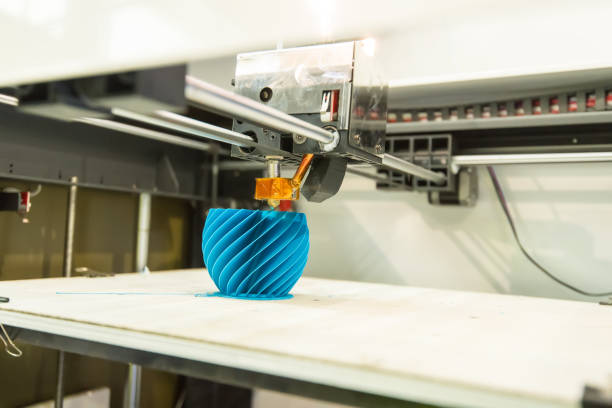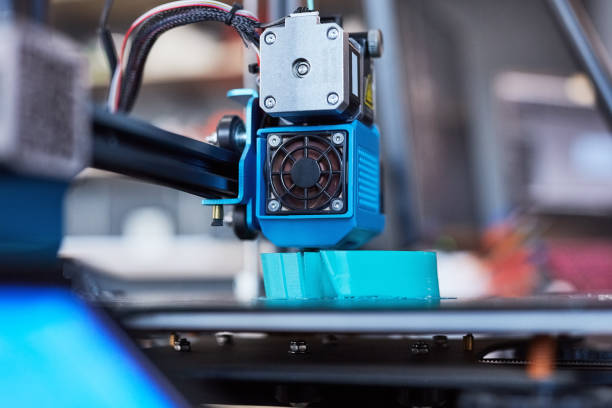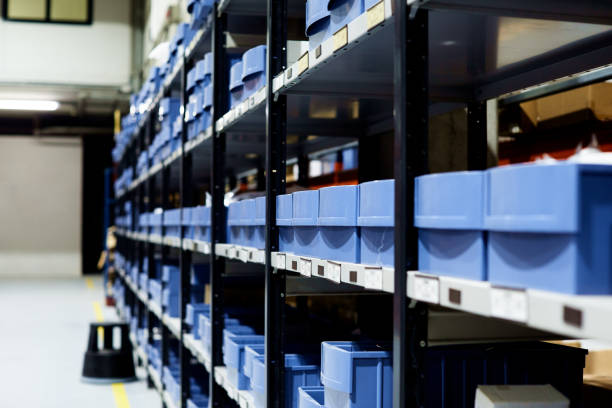
Guangzhou, the capital of China’s Guangdong province, has emerged as a global powerhouse in the vacuum-forming plastic industry. This coastal city has become synonymous with innovative plastic manufacturing, and its dominance in vacuum-forming is rooted in a combination of historical factors, industrial infrastructure, and a thriving business ecosystem.
Vacuum-forming, a simplified version of thermoforming, involves heating a sheet of plastic to a pliable forming temperature, stretching it onto a mold, and applying vacuum pressure to shape the plastic. It's a cost-effective manufacturing process used to produce lightweight, durable, and aesthetically flexible components, making it ideal for a wide range of industries, including automotive, packaging, medical devices, and consumer goods.
In this comprehensive blog post, we will explore the factors that have enabled Guangzhou to dominate the vacuum-forming plastic industry, the role of its infrastructure and skilled workforce, and the challenges and future trends that may impact the city's continued growth in this field.
The Evolution of Guangzhou’s Manufacturing Powerhouse
Guangzhou’s position as a leader in vacuum-forming plastic can be traced back to the city’s broader manufacturing history. Guangdong province, where Guangzhou is the economic hub, has been a key player in China’s economic development for decades. Its strategic location near Hong Kong and Shenzhen has contributed to its rapid growth as a manufacturing center.
1. A Rich History in Manufacturing
Guangzhou’s role as a manufacturing hub dates back to the late 20th century when China embraced economic reforms under Deng Xiaoping. The establishment of Special Economic Zones (SEZs) in nearby cities like Shenzhen provided a blueprint for industrialization in the region. Guangzhou quickly followed suit, and over time, its industrial base expanded across various sectors, including plastics.
In the 1980s and 1990s, as China's manufacturing sector grew, Guangzhou became a magnet for foreign investment, particularly from companies looking for cost-effective manufacturing solutions. Over the years, industries like automotive, electronics, and consumer goods set up production in Guangzhou, creating a robust demand for vacuum-formed plastic components.
2. Guangzhou’s Strategic Location
Geographically, Guangzhou's location is one of its greatest assets. Its proximity to Hong Kong, Macau, and the South China Sea positions it perfectly for both domestic and international trade. The city boasts some of the most advanced logistics networks in China, with access to major seaports, airports, and highways that facilitate the quick and efficient transportation of raw materials and finished products.
This advantageous location has allowed Guangzhou to become a pivotal player in global supply chains. Its well-developed transportation infrastructure supports the vacuum-forming plastic industry by ensuring that raw plastic materials can be easily imported and finished products can be exported to international markets.
3. Industrial Clusters and Specialized Zones
Guangzhou's success in vacuum-forming plastic manufacturing is also supported by the presence of industrial clusters and specialized manufacturing zones. These clusters allow businesses to work closely together, improving efficiency, fostering innovation, and reducing costs. The city’s industrial parks are home to numerous plastic manufacturers, vacuum-forming equipment suppliers, and mold makers.
Key industrial parks such as the Guangzhou Economic and Technological Development Zone (GETDZ) and the Guangzhou Nansha Economic and Technological Development Zone have attracted both domestic and foreign investment in the plastics sector. These clusters also promote knowledge sharing and collaboration, allowing manufacturers to stay ahead of the competition by adopting the latest technologies and best practices.
4. Access to Raw Materials
Another important factor contributing to Guangzhou's dominance in the vacuum-forming plastic industry is its access to raw materials. China is one of the world’s largest producers of petrochemicals, the key raw material used in plastic production. Guangzhou’s proximity to chemical production facilities in neighboring cities like Dongguan and Foshan ensures a steady supply of raw materials needed for plastic manufacturing.
This access to high-quality raw materials allows Guangzhou-based manufacturers to produce a wide range of vacuum-formed plastic products at competitive prices. The integration of raw material suppliers within the region also reduces transportation costs and ensures greater control over the quality of materials used in the production process.
Technological Advancements in Guangzhou’s Vacuum-Forming Industry

Technological innovation has been a driving force behind Guangzhou's leadership in the vacuum-forming plastic industry. The city’s manufacturers have embraced automation, advanced manufacturing techniques, and the latest vacuum-forming equipment to produce high-quality plastic products that meet the diverse needs of various industries.
1. Automation and Robotics
One of the key trends in Guangzhou’s vacuum-forming industry is the increasing use of automation and robotics. By automating repetitive tasks, manufacturers can improve precision, reduce labor costs, and increase production speed. Automation also minimizes human error, resulting in higher-quality finished products.
Robotic systems are now being used in the trimming, inspection, and packaging stages of vacuum-forming, allowing manufacturers to streamline their operations. This trend has been particularly beneficial for the production of large, complex components, such as those used in the automotive and aerospace industries.
2. 3D Printing and Prototyping
The adoption of 3D printing technology has revolutionized the vacuum-forming process in Guangzhou. 3D printing enables manufacturers to create precise molds and prototypes quickly and cost-effectively. This reduces the time required for product development and allows manufacturers to respond more rapidly to customer demands.
By integrating 3D printing with vacuum-forming processes, Guangzhou-based companies can produce highly customized plastic components in smaller quantities, making it easier to cater to niche markets and low-volume production runs. This flexibility has given Guangzhou a competitive edge in industries such as medical devices, where customization and precision are critical.
3. Advanced Materials
Guangzhou’s vacuum-forming plastic industry is also benefiting from advancements in materials science. Manufacturers in the city are increasingly using high-performance plastic materials, such as polycarbonate, ABS, and PETG, which offer improved durability, strength, and resistance to heat and chemicals.
These materials are ideal for vacuum-forming because they can be easily shaped and molded without losing their mechanical properties. As industries like automotive and aerospace demand more lightweight yet strong materials, Guangzhou-based manufacturers are well-positioned to meet these needs with innovative material solutions.
Industry Diversification and Market Demand

The vacuum-forming plastic industry in Guangzhou is characterized by its diversity. The city serves as a production hub for a wide range of industries, each with unique requirements for plastic components. This diversification has enabled Guangzhou to remain resilient in the face of changing market dynamics and economic challenges.
1. Automotive Industry
One of the largest markets for vacuum-formed plastic components in Guangzhou is the automotive industry. The city is home to major automotive manufacturers, including joint ventures with international brands such as Toyota, Honda, and Nissan. Vacuum-formed plastic components are used in various automotive applications, including dashboards, door panels, interior trim, and engine covers.
As the automotive industry shifts towards electric vehicles (EVs), the demand for lightweight, durable materials is increasing. Vacuum-formed plastic components offer an ideal solution for reducing vehicle weight and improving fuel efficiency. Guangzhou’s manufacturers are investing in research and development to create advanced plastic materials that meet the requirements of next-generation EVs.
2. Packaging Industry
The packaging industry is another major driver of demand for vacuum-formed plastic products in Guangzhou. The city’s thriving consumer goods sector requires a steady supply of vacuum-formed packaging materials, including trays, clamshells, and blisters. Vacuum-formed plastic packaging is popular because it is cost-effective, lightweight, and provides excellent protection for products during transportation.
Guangzhou’s vacuum-forming manufacturers are also responding to the growing demand for sustainable packaging solutions. Many companies are investing in biodegradable plastics and recycled materials to reduce their environmental impact and meet the expectations of eco-conscious consumers.
3. Medical Devices
The medical device industry has seen significant growth in Guangzhou in recent years, and vacuum-formed plastic components play a critical role in the production of medical equipment. Vacuum-forming is used to produce disposable plastic trays, medical enclosures, and housings for diagnostic equipment.
As the global healthcare industry expands, the demand for vacuum-formed medical devices is expected to rise. Guangzhou’s manufacturers are well-positioned to meet this demand, thanks to their expertise in producing high-quality, sterile plastic components that meet stringent regulatory requirements.
4. Consumer Goods
Vacuum-formed plastic components are widely used in the production of consumer goods, ranging from household appliances to electronics. Guangzhou’s manufacturers produce a wide range of plastic housings, panels, and casings for products such as televisions, refrigerators, and smartphones.
The consumer goods sector in China is growing rapidly, driven by rising disposable incomes and increasing demand for modern, high-quality products. This trend is creating new opportunities for vacuum-forming manufacturers in Guangzhou, as companies look for innovative plastic solutions that offer aesthetic appeal and durability.
Challenges Facing Guangzhou’s Vacuum-Forming Industry
Despite its many advantages, Guangzhou’s vacuum-forming plastic industry faces several challenges that could impact its continued growth and dominance.
1. Environmental Concerns
The global push for sustainability is placing increasing pressure on the plastics industry to reduce its environmental footprint. Vacuum-forming involves the use of plastic materials, which are often derived from petrochemicals and contribute to environmental pollution.
In response to these concerns, Guangzhou-based manufacturers are exploring ways to reduce plastic waste and increase the use of recycled materials. Some companies are also investing in biodegradable plastics and developing processes that minimize energy consumption. However, transitioning to more sustainable practices can be costly and may require significant investment in new technologies.
2. Rising Labor Costs
Like other manufacturing industries in China, the vacuum-forming sector in Guangzhou is facing rising labor costs. As wages increase, manufacturers must find ways to maintain profitability while remaining competitive in the global market. Automation and robotics offer a potential solution, but implementing these technologies requires significant capital investment.
3. Geopolitical Tensions and Trade Barriers
Ongoing geopolitical tensions, particularly between China and Western countries, pose a potential risk to Guangzhou’s vacuum-forming industry. Trade barriers, tariffs, and supply chain disruptions can affect the export of vacuum-formed plastic products to international markets. Manufacturers in Guangzhou must navigate these challenges by diversifying their customer base and exploring new markets.
Future Trends and Opportunities

Despite the challenges, Guangzhou’s vacuum-forming plastic industry is poised for continued growth, driven by emerging trends and new opportunities.
1. Green Manufacturing
The shift towards sustainability will continue to shape the future of Guangzhou’s vacuum-forming industry. Manufacturers that adopt green manufacturing practices, such as using recycled materials and reducing energy consumption, will be better positioned to meet the demands of environmentally conscious consumers and regulators.
2. Customization and Personalization
The growing demand for personalized products is creating new opportunities for vacuum-forming manufacturers in Guangzhou. By offering customized plastic components, manufacturers can cater to niche markets and meet the specific needs of individual customers. Advanced manufacturing technologies, such as 3D printing, will play a key role in enabling this trend.
3. Expansion into Emerging Markets
As Guangzhou’s manufacturers look to diversify their customer base, emerging markets in Southeast Asia, Africa, and South America offer promising opportunities for growth. These regions are experiencing rapid industrialization and urbanization, driving demand for vacuum-formed plastic products across various industries.
Conclusion
Guangzhou's dominance in China's vacuum-forming plastic industry is the result of a combination of factors, including its rich manufacturing history, strategic location, advanced technology, and access to raw materials. The city’s manufacturers have established a strong presence in key industries such as automotive, packaging, and medical devices, allowing them to thrive in an increasingly competitive global market.
While challenges such as environmental concerns and rising labor costs exist, Guangzhou’s vacuum-forming industry is well-positioned to overcome these hurdles through innovation, automation, and a focus on sustainability. As new trends and opportunities emerge, Guangzhou will likely continue to lead the way in vacuum-forming plastics, shaping the future of this dynamic and essential industry.






0 comments:
Post a Comment